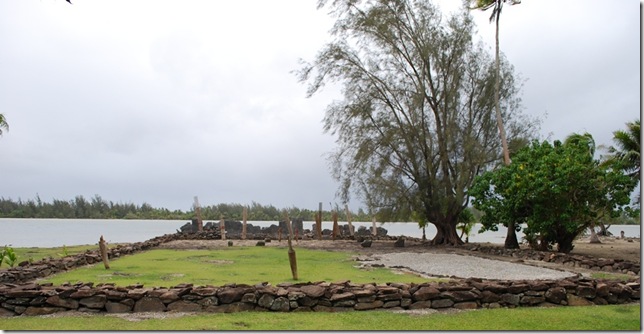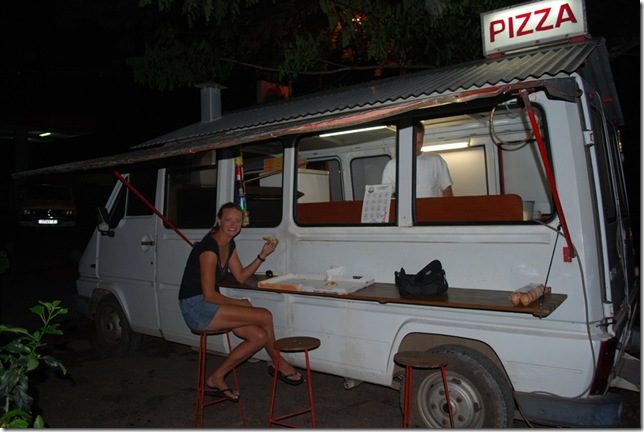Believe it or not, we’ve been here since Friday, and Lauren and I just took our first trip ashore yesterday. We’ve enjoyed a couple days of snorkeling, diving, and catching up on e-mail. It’s been overcast and rainy most of the time we’ve been here, but you’re going to get wet diving anyway, and even overcast days don’t hide the beauty of the island.
Huahine came well recommended from a number of people and they didn’t steer us wrong. It’s a high island, like the Marquesas, but the mountains have softer, less rugged contours and include some beautiful tree varieties that aren’t found in the Marquesas. In addition to the surrounding lagoons, the Society Islands in general enjoy a coastal plain region that circles the island at its base. Nearly all of the population lives in this strip of fairly flat land, along a main road that rings the island. It’s a change in population density from the inhabited but isolated valleys of the Marquesas and makes it very convenient to explore the island by bicycle (if anyone knows how to repair a slightly bent rim before it gets worse, let us know). The freedom of movement allowed by the coastal plain areas probably also played a role in these islands having a more united government and religious organization than the Marquesas.
Huahine has been inhabited since about 850 AD. The ancient name for the island means "joyous breeze", but at some point it was changed to the current Huahine, which refers rather explicitly to a member of the female anatomy ("Hine" means woman and translations of "Hua" apparently include hole and sex). There’s a legend that says the name of the island comes from a princess who escaped nearby Raiatea by floating away inside a large drum. She and the warrior who found her named the 10 regions of the island after their children. It’s been interesting to hear the island legends that explain names and origins of the various places, but it does seem a little unlikely that the Tuamotus were formed by a strong storm that knocked off some pieces of the Marquesas. The name is also said to come from the outlines of the mountain peaks, which supposedly look like a woman lying down when viewed from the beach here at Fare. The other story we heard is that the name is derived from a round bay on the east side of the island with a large, natural basalt column towering above it. At any rate, even though the island is reputed to be endowed with femininity and was ruled by a Queen when Cook arrived, Lauren’s certain is was actually named by a man. Apparently the people of Huahine weren’t too keen on becoming French. There were a number of battles and Huahine wasn’t annexed until 40 years after Tahiti, with the population not getting French citizenship until 1945.
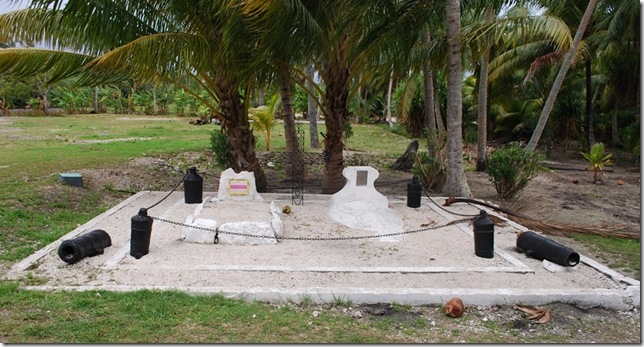 Memorial to those killed in the battles between the French and the natives
Memorial to those killed in the battles between the French and the natives
In addition to being a beautiful emerald ring around the island, the lagoon provides a lot of recreation and resources. The locals are frequently out canoeing and fishing and the diving is great. The swell from the south creates some incredibly picturesque surf waves, but with a jagged reef marking their final destination, I think I’ll wait for a sandy beach to make another effort at learning to surf. When Lauren and I finally made it ashore, we re-traced the path Wes and Tiff had taken. On the north side of the island there’s a large lagoon with a small river-like entrance that is actually referred to as a lake. Fish parks are common here and in the Tuamotus as a method of raising fish to sell in Tahiti, but here there is also an ancient method of building stone walls in the channel that feeds into the northern lagoon to route and capture ocean fish. The stone walls don’t appear to be in use anymore, but there were definitely active fish farms in the area.
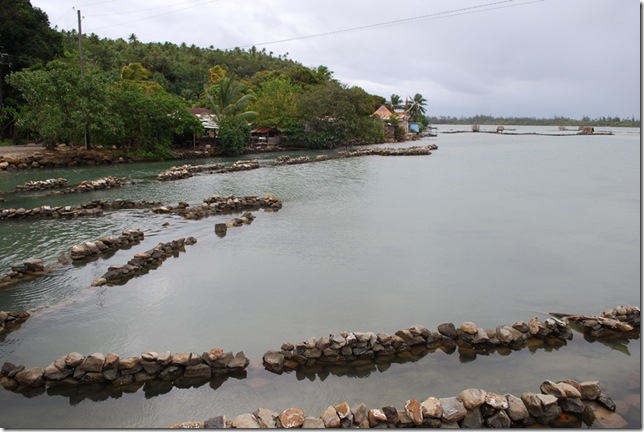 Stone walls in the foreground and a fish farm in the background
Stone walls in the foreground and a fish farm in the background
Along the way, there was an area where there are a number of marae by the lagoon, which are a bit different here than in the Marquesas. Here they are large, open areas paved with stone and featuring a single raised area. There aren’t any tikis or carvings, and much of the structure and ornamentation was made of organic materials, so there’s not much left to see besides the foundations, though the size and lagoon-side setting are memorable.
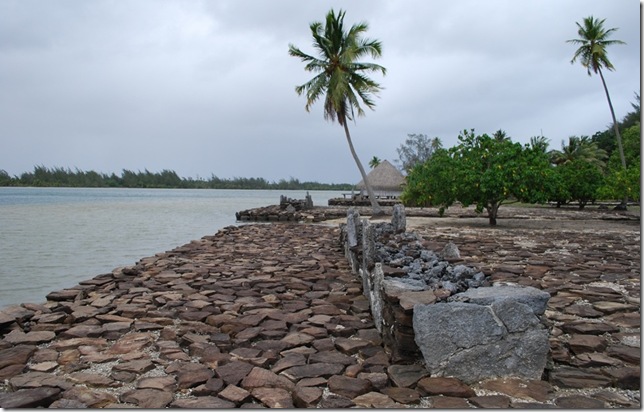 Three adjacent marae at the edge of the lagoon
Three adjacent marae at the edge of the lagoon
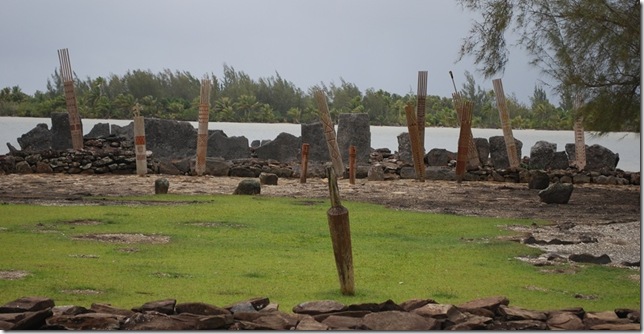 Wooden carvings decorating the large marae
Wooden carvings decorating the large marae
Not much was open when we made it back to town Sunday night, but we did find something that sparked our interest: a pizza van! This time the thin-crust pizza was incredibly good. Tbe ingredients were all western-style and the pizza was cooked in a small pizza oven inside the truck. After diving and biking, we were hungry enough that we almost ordered another one. I’ve been joking about opening up a "Gringo Burrito" stand to make a few bucks in New Zealand since Lauren and I have been making homemade tortillas and burritos, but the pizza option is now under consideration as well.
Just when you think the list of boat repairs is shortening, you realize the futility of thinking those kind of thoughts. The port engine had done well after tightening the oil pressure regulator until just as we finished anchoring when it started squeaking, just at the edge of the threshold for going off. Luckily, nearby Raiatea is the charter and yachting capital of French Polynesia and if it’s still a problem, we should be able to find a mechanic there. Our sail cover was questionable when we left Florida, and it’s developed numerous tears, but it’s still protecting the main from UV damage and should get us to New Zealand. While the winds are about 25 knots offshore, here they howl down from the mountains and the gusts feel like they’re easily topping 40 knots, but the cover hasn’t blown off yet. Yesterday, we turned the inverter on and the control panel started beeping and displaying an error code. I opened the cockpit locker where the inverter is located and saw smoke coming out of it. I’ll try a bit of troubleshooting at some point, but it’s a well know fact that once the magic smoke has escaped, electronics typically lose their functionality. Luckily we have some small inverters that we should be able to get by with.


